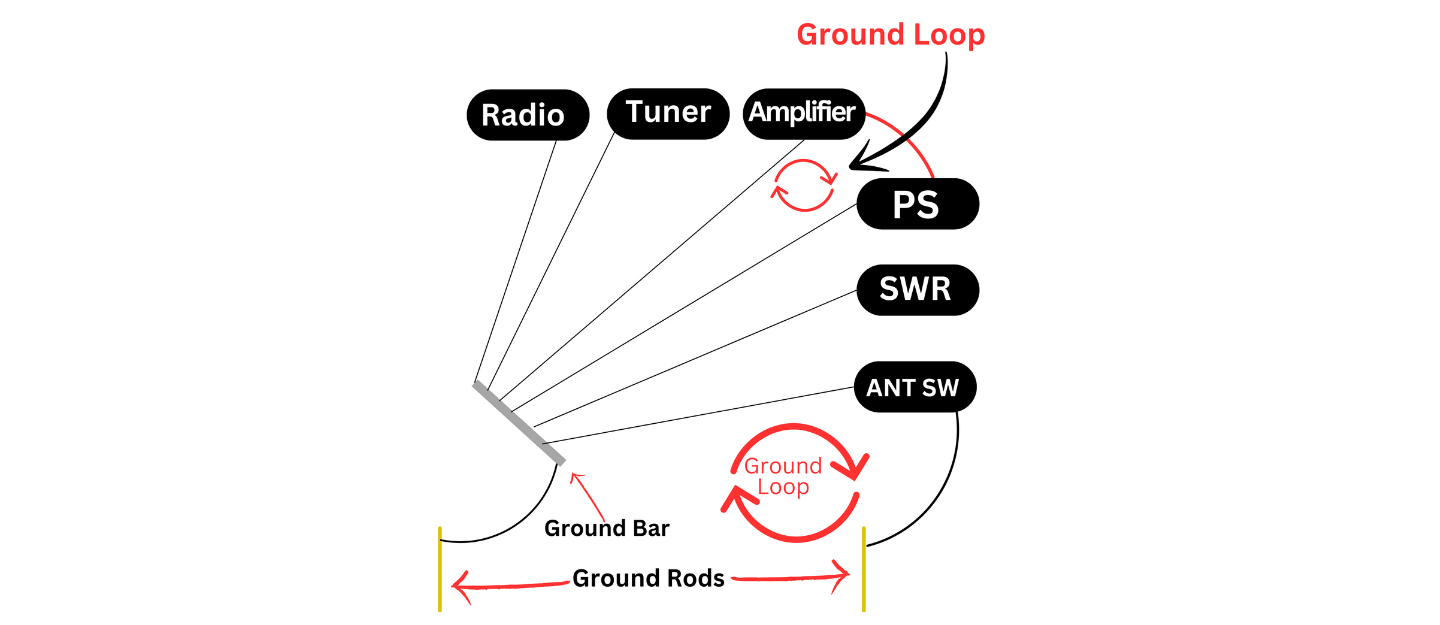Daisy Chain Ground, also known as a serial ground, involves connecting multiple devices or components in a chain-like fashion through a grounding conductor. It may seem like a convenient way to connect multiple devices to a single grounding point. However, daisy chaining grounding is known to be bad practice in electrical and electronic systems for several reasons.
Daisy Chain Ground Issues
Each additional connection in the daisy chain introduces additional resistance to the grounding path. As a result, the overall resistance of the grounding system increases with each device added to the chain. Higher resistance can lead to poor grounding effectiveness, increased voltage drop, and reduced protection against electrical faults and surges.
Daisy chaining grounding can create ground loops. Which causes unintended paths for electrical currents. Ground loops can pick up electromagnetic interference (EMI) and induce unwanted signals in the system. This leads to noise, hum, or interference in audio, video, or radio signals.
In addition, devices down the chain may experience a higher potential difference compared to devices closer to the grounding point. This can result in unequal grounding potentials between devices. Additionally, it leads to ground loops and potential safety hazards, such as electrical shock or equipment damage.
Daisy chaining grounding can make troubleshooting and diagnosing grounding issues more challenging. With multiple devices connected in series, isolating the source of grounding problems is difficult. You have to identify faulty connections becomes more complex, potentially prolonging troubleshooting efforts and downtime.
When a device daisy chain configuration fails, it can disrupt the grounding path for all downstream devices. This creates a lack of redundancy that increases the risk of equipment damage.
Proper Grounding Benefits
Grounding provides a safe path for electrical currents to flow in the event of a fault or surge. It helps prevent electrical shocks to operators and reduces the risk of fire or equipment damage caused by electrical faults.
Grounding helps protect radio equipment from damage due to static electricity buildup, lightning strikes, and electrical surges. By providing a low-resistance path to the Earth, grounding dissipates excess electrical energy. This prevents damage to sensitive components ensuring the longevity of equipment.
Proper grounding minimizes common-mode noise and interference, improving signal-to-noise ratios and enhancing signal clarity. Grounding helps mitigate electromagnetic interference (EMI) and radio frequency interference (RFI), ensuring reliable communication and minimizing signal degradation.

Regulatory Compliance:
Many regulatory standards and guidelines mandate proper grounding of electrical and electronic equipment to ensure safety. Compliance with these regulations is essential for legal and regulatory reasons. In addition, it helps to mitigate liability in the event of accidents or incidents.
Protection Against Ground Loops:
Grounding helps to minimize the risk of ground loops, which introduce unwanted noise and interference into audio and radio frequency signals. By providing a common reference point for electrical potentials, grounding reduces the likelihood of ground loop-induced problems in radio equipment.
To ensure safe, effective grounding in electrical and electronic systems. A star configuration. with a common grounding point with individual connections such as a grounding bus or ground bar. This approach minimizes resistance, reduces the risk of ground loops, and provides a more reliable and stable grounding reference for all connected devices.
